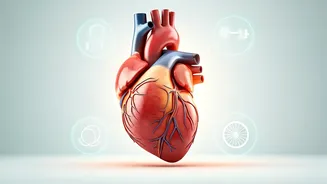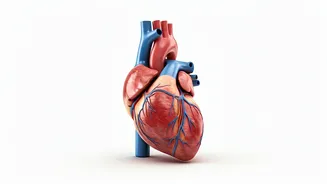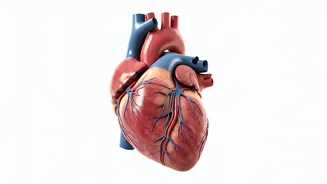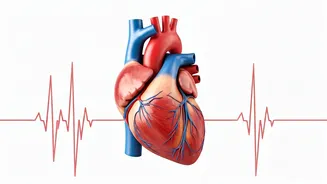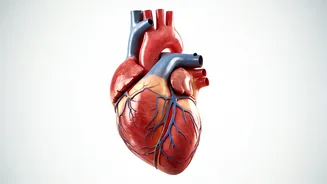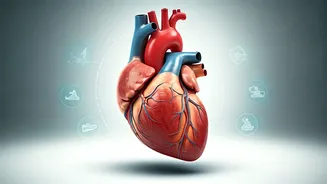Brisk Walking Benefits
Brisk walking is a fundamental exercise known for its effectiveness and simplicity. This classic activity offers numerous benefits for heart health. Walking
at a pace that slightly elevates your heart rate is a great starting point for beginners. It's easily adaptable to any environment, requiring no special equipment, making it a sustainable habit for long-term health. Regular brisk walks improve cardiovascular function, helping to lower blood pressure and reduce the risk of heart disease. Aim for at least 30 minutes of brisk walking most days of the week to maximize its positive impact on your heart and overall fitness levels. Additionally, walking can be easily integrated into your daily routine, such as taking the stairs or walking during your lunch break, making it a highly practical and accessible exercise option.
Cycling for Heart Health
Cycling, another excellent low-impact exercise, is a fantastic choice for improving heart health. Whether you prefer cycling outdoors or using an indoor stationary bike, this activity offers a great cardiovascular workout. Cycling is gentler on the joints compared to high-impact exercises like running, making it suitable for people of various fitness levels, including those with joint issues. Cycling strengthens the heart muscle, enhances blood circulation, and helps to reduce bad cholesterol levels. Aim for at least 30 minutes of cycling at a moderate intensity to achieve noticeable benefits. Indoor cycling classes or simply riding your bike in the park can provide a fun and engaging way to reach your fitness goals. Cycling also promotes weight management, which is crucial for reducing the risk of heart disease. Regular cycling helps improve overall fitness and boost your cardiovascular health.
Embrace Gentle Yoga
Yoga, especially the gentler forms, provides a holistic approach to heart health. Yoga combines physical postures, breathing exercises, and meditation, which can have a profound impact on cardiovascular well-being. Yoga can lower blood pressure and reduce stress levels, both of which are critical for heart health. Regular yoga practice improves flexibility, balance, and muscle strength. It also promotes a sense of calmness and reduces anxiety, contributing to better overall health. Consider incorporating yoga into your routine a couple of times a week, gradually increasing the duration and intensity as your body adapts. Choose classes that focus on gentle movements and mindful breathing, ensuring you feel comfortable and supported. Yoga offers a pathway to a healthier heart and a more balanced lifestyle.
Swimming & Water Aerobics
Swimming and water aerobics offer fantastic cardiovascular benefits with the added advantage of being low-impact. These activities are perfect for people of all ages and fitness levels, especially those with joint pain or other physical limitations. The buoyancy of water reduces the stress on your joints while still providing a full-body workout. Swimming boosts heart health by improving blood circulation and strengthening the heart. Water aerobics classes combine various exercises, making it a fun and social way to exercise. These routines incorporate movements designed to increase heart rate and improve endurance. Aim for at least 30 minutes of swimming or water aerobics a few times a week to improve your cardiovascular fitness and overall well-being. Swimming and water aerobics provide effective exercise, with minimal risk of injury.
Dancing: Move Naturally!
Dancing is a fun and engaging way to improve your heart health. It can be a surprisingly effective form of exercise, providing both cardiovascular and social benefits. Dancing elevates your heart rate, increases endurance, and improves coordination and balance. There are numerous dance styles to explore, from ballroom to salsa, making it a versatile option to suit different preferences. Dancing also promotes a sense of joy and reduces stress, contributing positively to overall well-being. Attending dance classes or dancing at home to your favorite music can be a great way to stay active. Aim for at least 30 minutes of dancing several times a week to reap the heart-healthy rewards. Dancing is an enjoyable and accessible way to improve your cardiovascular fitness.
Low-Impact Bodyweight Circuit
A low-impact bodyweight circuit is an excellent option for a full-body workout that's gentle on your joints while still boosting your heart rate. This type of circuit typically involves a series of exercises performed one after the other, with minimal rest in between. Common exercises include squats, push-ups (modified on knees if necessary), planks, and lunges. These exercises improve strength, endurance, and cardiovascular health. Perform each exercise for a set duration or number of repetitions, followed by a short rest. Repeat the circuit two to three times. These circuits can be adapted to any fitness level, by adjusting the number of sets, repetitions, and the intensity of the exercises. Low-impact circuits require no equipment and can be done virtually anywhere, making it a highly accessible choice. Regular engagement enhances cardiovascular health and boosts overall fitness, with no need for a gym or equipment.
Consistent Habits for Results
Consistency is key to reaping the rewards of any exercise routine. Making these low-impact exercises a regular part of your lifestyle will have a big impact on your heart health. Start with a realistic schedule, and gradually increase the duration and intensity as your fitness improves. Aim to engage in these exercises most days of the week, even if it's just for a short period. Find activities that you enjoy, so that you're more likely to stick with them long-term. Track your progress to stay motivated and celebrate your achievements. Listen to your body and rest when needed to avoid injury. Combine these exercises with a balanced diet and other healthy lifestyle choices, such as reducing stress and getting enough sleep, for optimal heart health. Consistency enables long-term benefits and overall well-being.
